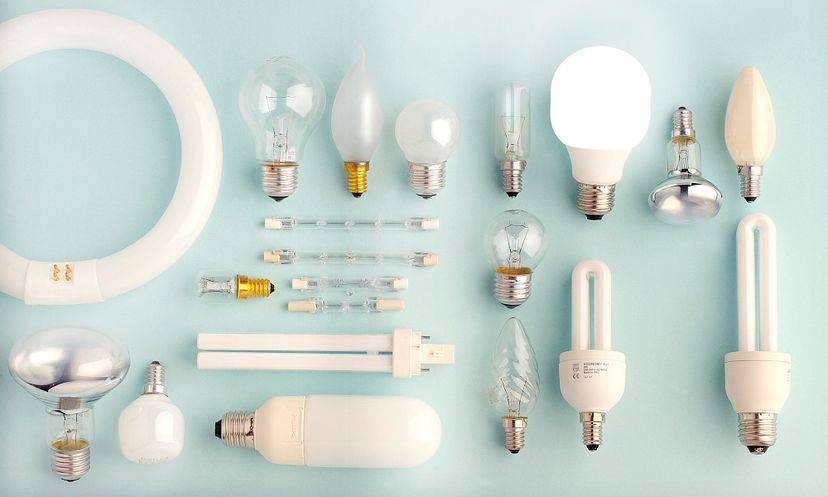
About This Quiz
What's inside a light bulb? Why don't they burst into flames? What exactly makes a light bulb glow, anyway? Take our quiz to see whether you're in the dark about how light bulbs work.People lit their homes with oil lamps for thousands of years before the use of light bulbs. If you visit ancient ruins, you can still see the dirt these lamps left on the walls.
Though most people associate Thomas Edison with the electric light bulb, Joseph Swan developed a working bulb a year earlier than Edison did.
Swan and Edison each invented a version of the light bulb in the late 1870s.
Advertisement
Light bulbs were inexpensive and easy to make and created no mess that had to be cleaned up. These factors made the light bulb a no-brainer that spread around the world very quickly.
Photons are the energy particles that atoms release when their electrons get an energy boost.
Photons have no mass, so they don't weigh anything at all. But they move at the speed of light.
Advertisement
Usually, an electron will move farther from the atom's center only temporarily. Once it releases its extra energy, it will return to its regular distance from the nucleus.
Different types of atoms have their electrons in different places. This changes the wavelengths of the light they release, which determines the color of the light.
The two contacts are in different places; one is on the bottom and one is on the side of the screw threading. The two contacts complete a circuit when you turn the light on.
Advertisement
Free electrons are the ones that flow through a solid material in an electrical current. That's why they can't be bound to other atoms.
Since electrons are negatively charged, they flow to a positively charged area.
Electrons moving through a light bulb filament collide with the metal atoms already there. When the atoms vibrate from these "traffic accidents," they heat up and give off light.
Advertisement
As electrons move through more resistant, thin filaments, they collide with more atoms and heat the filaments more.
Before a metal atom gets hot enough, it will release only invisible infrared light. However, at a high enough temperature, around 4,000 degrees Fahrenheit (2,204 degrees Celsius) some of the photons it releases will be as visible light.
The filament is about 6.5 feet (1.9 meters) long but just a fraction of an inch thick. It's doubled up and tightly coiled to fit in a space about an inch (2.5 centimeters) long.
Advertisement
Unlike most metals, tungsten does not melt at the high temperatures that light bulb filaments reach.
When a tungsten atom separates from the filament in a vacuum, it flies onto the inside of the glass. Without a vacuum, its hit another gas molecule and bounces back onto the filament.
Since argon is an inert gas, the filament glows without catching fire, as it would with air.
Advertisement
Since most of the light that an incandescent bulb emits is infrared, they waste a lot of energy. You might consider fluorescent bulbs or light-emitting diodes (LEDs) if you are looking for an efficient alternative.
By using two filaments of different wattages, a three-way bulb can light at three different brightness levels. It can use just the lowest wattage filament, just the brighter or both.